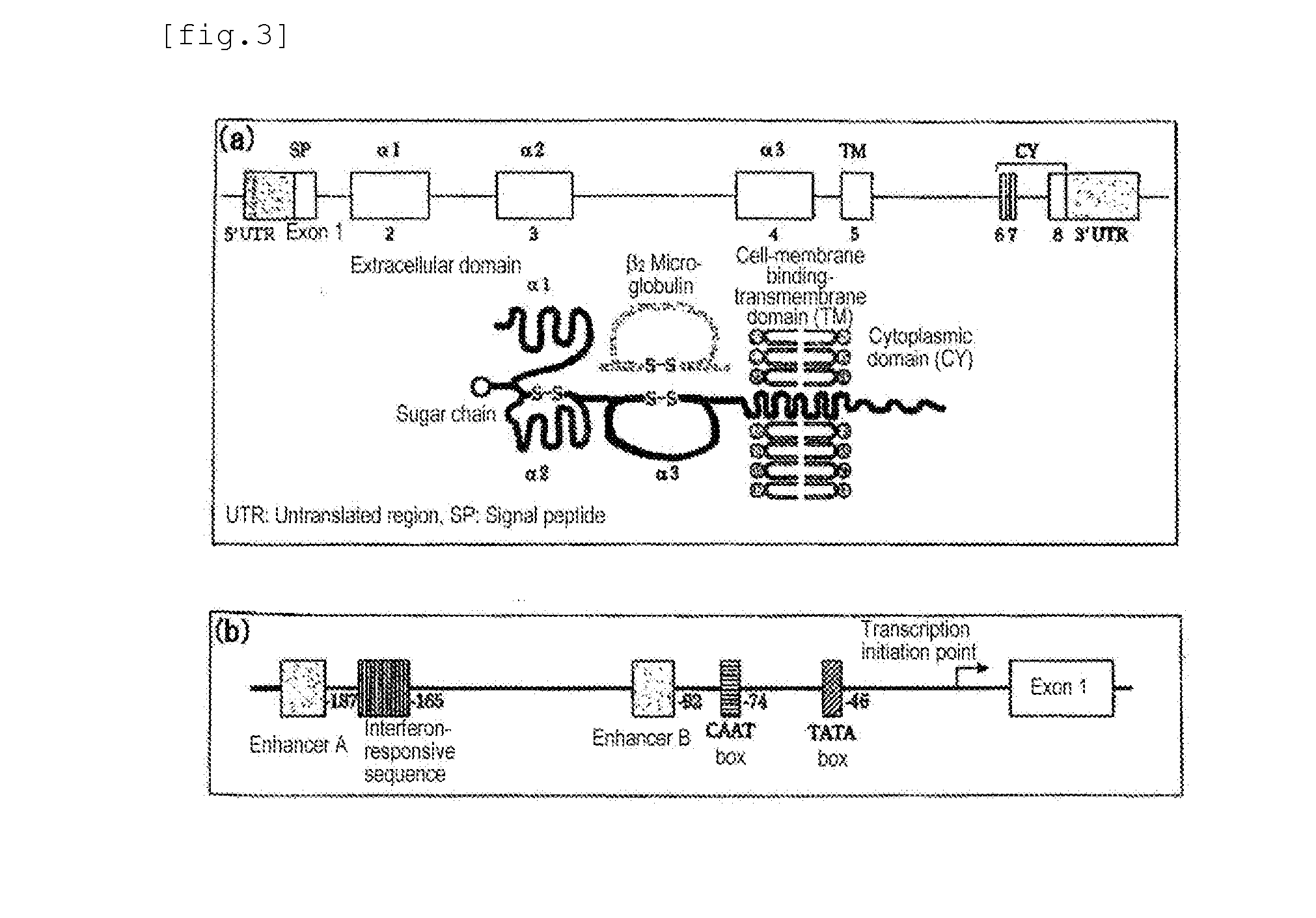Simple Method and Kit for DNA Typing of HLA Genes by High-Throughput Massively Parallel Sequencer
a massive parallel sequencer and dna typing technology, applied in the field of dna typing kits and high throughput massive parallel sequencers, can solve the problems of severe adverse drug reactions, reduced platelet transfusion efficacy, and inability to easily determine whether the polymorphic region is in a cis-configuration (on the same chromosome) or in a trans-configuration. the effect of reducing the time required for pcr and reducing the size of th
- Summary
- Abstract
- Description
- Claims
- Application Information
AI Technical Summary
Benefits of technology
Problems solved by technology
Method used
Image
Examples
example 1
Purpose
[0096]The purpose of this example is to check the amplification states for each gene of HLA class II.
[Method]
[0097]Using PrimeSTAR® GXL DNA Polymerase (TaKaRa Bio Inc.) as an enzyme, genomic DNA already extracted as a template and primer sets specific to individual HLA class II genes (see Table 1: SEQ ID NOs: 1 to 7), a PCR was carried out. The procedure is more specifically as follows.
[0098](1) To 25 ng of a genomic DNA solution, 4 μL of 5× PrimeSTAR® GXL buffer, 1.6 μL of a dNTP solution, 1 μL of PCR primers (4 pmol / μL) for each and 0.8 μL of PrimeSTAR® GXL polymerase were added. The whole amount of the reaction solution was adjusted to be 20 μL with sterilized water.
[0099](2) After kept at 94° C. for 2 minutes, the preparation of (1) was subjected to a step consisting of a reaction at 98° C. for 10 seconds and a reaction at 70° C. for 3 minutes. This step was repeated 30 times for PCR. Note that, for the PCR amplification, GeneAmp® PCR System 9700 (Life Technologies Corpor...
example 2
Purpose
[0101]The purpose of this example is to determine the potentiality of a multiplex PCR method of 6 loci of HLA genes including HLA-A, HLA-B and HLA-C genes in addition to HLA class II of Example 1.
[Method]
[0102]1. Using PrimeSTAR® GXL DNA Polymerase (TaKaRa Bio Inc.), genomic DNA already extracted from six specimens (Samples 1 to 6 in Table 3) as a template and primer sets specific to individual HLA class I and HLA class II genes (see Table 2: SEQ ID NOs: 8 to 15 and Table 1: SEQ ID NOs: 1 to 7), a PCR was carried out. Note that, the HLA type for each of the six specimens has been already revealed and the specimens include a combination of alleles, in which phase ambiguity was observed in a conventional DNA typing method. The procedure is more specifically as follows.
[0103](1) The PCR was carried out in two 0.2 ml tubes. In short, HLA-A, HLA-B and HLA-C genes were amplified in one of the tubes and HLA-DRB1, HLA-DRB3, HLA-DRB4, HLA-DRB5, HLA-DQB1 and HLA-DPB1 genes were amplifi...
example 3
Purpose
[0115]The purpose of this example is to determine the potentiality of a multiplex PCR method of 7 loci of HLA genes (HLA-A, HLA-B, HLA-C, HLA-DRB1, HLA-DRB3, HLA-DRB4 and HLA-DRB5 genes) and 9 loci of HLA genes (HLA-A, HLA-B, HLA-C, HLA-DRB1, HLA-DRB3, HLA-DRB4, HLA-DRB5, HLA-DQB1 and HLA-DPB1 genes).
[Method]
[0116]1. Using PrimeSTAR® GXL DNA Polymerase (TaKaRa Bio Inc.), genomic DNA already extracted from four specimens (Samples 1 to 4 in Table 4) as a template and primer sets specific to individual HLA class I and HLA class II genes (see Table 2: SEQ ID NOs: 8 to 15 and Table 1: SEQ ID NOs: 1 to 5), a PCR was carried out. Note that, the HLA type for each of the four specimens has been already revealed and the specimens include a combination of alleles, in which phase ambiguity was observed in a conventional DNA typing method.
[0117]SEQ ID NOs: 8 to 15 of Table 2 and SEQ ID NOs: 1 to 5 of Table 1 were used with respect to HLA-A, HLA-B, HLA-C, HLA-DRB1, HLA-DRB3, HLA-DRB4, HLA-...
PUM
| Property | Measurement | Unit |
|---|---|---|
| temperature | aaaaa | aaaaa |
| temperature | aaaaa | aaaaa |
| concentration | aaaaa | aaaaa |
Abstract
Description
Claims
Application Information
 Login to View More
Login to View More - R&D
- Intellectual Property
- Life Sciences
- Materials
- Tech Scout
- Unparalleled Data Quality
- Higher Quality Content
- 60% Fewer Hallucinations
Browse by: Latest US Patents, China's latest patents, Technical Efficacy Thesaurus, Application Domain, Technology Topic, Popular Technical Reports.
© 2025 PatSnap. All rights reserved.Legal|Privacy policy|Modern Slavery Act Transparency Statement|Sitemap|About US| Contact US: help@patsnap.com



